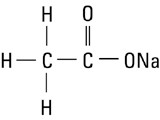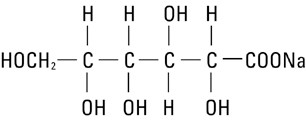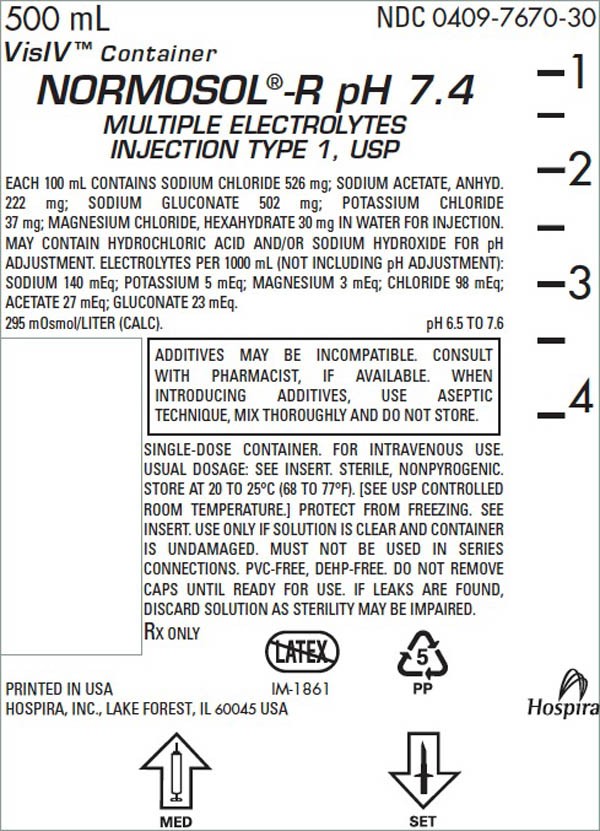Normosol-R
NORMOSOL-R pH 7.4
FULL PRESCRIBING INFORMATION: CONTENTS*
- NORMOSOL-R DESCRIPTION
- CLINICAL PHARMACOLOGY
- NORMOSOL-R INDICATIONS AND USAGE
- NORMOSOL-R CONTRAINDICATIONS
- WARNINGS
- PRECAUTIONS
- NORMOSOL-R ADVERSE REACTIONS
- OVERDOSAGE
- NORMOSOL-R DOSAGE AND ADMINISTRATION
- HOW SUPPLIED
- IM-1861
FULL PRESCRIBING INFORMATION
MULTIPLE ELECTROLYTES INJECTION TYPE 1, USP
For Replacing Acute Losses of Extracellular Fluid
VisIV ™ Container
Rx only
NORMOSOL-R DESCRIPTION
Normosol®-R pH 7.4 is a sterile, nonpyrogenic, isotonic solution of balanced electrolytes in water for injection. The solution is administered by intravenous infusion for parenteral replacement of acute losses of extracellular fluid.
Each 100 mL of Normosol-R pH 7.4 contains sodium chloride, 526 mg; sodium acetate, 222 mg; sodium gluconate, 502 mg; potassium chloride, 37 mg; magnesium chloride, hexahydrate 30 mg. May contain hydrochloric acid and/or sodium hydroxide for pH adjustment. pH range 6.5 to 7.6; 295 mOsmol/liter (calc.).
Electrolytes per 1000 mL (not including pH adjustment): Sodium 140 mEq; potassium 5 mEq; magnesium 3 mEq; chloride 98 mEq; acetate 27 mEq; gluconate 23 mEq.
The solution contains no bacteriostat, antimicrobial agent or added buffer (except for pH adjustment) and is intended only for use as a single-dose injection. When smaller doses are required the unused portion should be discarded.
Normosol-R pH 7.4 is a parenteral fluid and electrolyte replenisher.
Sodium Chloride, USP is chemically designated NaCl, a white crystalline powder freely soluble in water.
Potassium Chloride, USP is chemically designated KCl, a white granular powder freely soluble in water.
Magnesium Chloride, USP is chemically designated magnesium chloride, hexahydrate (MgCl2 • 6H2O) deliquescent crystals very soluble in water.
Sodium Acetate, USP is chemically designated sodium acetate, anhydrous (C2H3NaO2), a hygroscopic powder soluble in water. It has the following structural formula:

Sodium gluconate is chemically designated C6H11NaO7, the normal sodium salt of gluconic acid soluble in water. It has the following structural formula:

Water for Injection, USP is chemically designated H2O.
The flexible plastic container is fabricated from a clear multilayer polyolefin plastic film. Exposure to temperatures above 25°C/77°F during transport and storage will lead to minor losses in moisture content. Higher temperatures lead to greater losses. It is unlikely that these minor losses will lead to clinically significant changes within the expiration period.
CLINICAL PHARMACOLOGY
When administered intravenously, Normosol-R pH 7.4 provides water and electrolytes for replacement of acute extracellular fluid losses without disturbing normal electrolyte relationships. The electrolyte composition approaches that of the principal ions of normal plasma (extracellular fluid). The electrolyte concentration is approximately isotonic in relation to the extracellular fluid (approx. 280 mOsmol/liter) and provides a physiologic sodium to chloride ratio, normal plasma concentrations of potassium and magnesium and two bicarbonate alternates, acetate and gluconate.
Sodium chloride in water dissociates to provide sodium (Na+) and chloride (Cl−) ions. Sodium (Na+) is the principal cation of the extracellular fluid and plays a large part in the therapy of fluid and electrolyte disturbances. Chloride (Cl−) has an integral role in buffering action when oxygen and carbon dioxide exchange occurs in the red blood cells. The distribution and excretion of sodium (Na+) and chloride (Cl−) are largely under the control of the kidney which maintains a balance between intake and output.
Potassium chloride in water dissociates to provide potassium (K+) and chloride (Cl−) ions. Potassium is the chief cation of body cells (160 mEq/liter of intracellular water). It is found in low concentration in plasma and extracellular fluids (3.5 to 5.0 mEq/liter in a healthy adult and child over 10 days old; 3.5 to 6.0 mEq/liter in a child less than 10 days old). Potassium plays an important role in electrolyte balance.
Normally about 80 to 90% of the potassium intake is excreted in the urine; the remainder in the stools and to a small extent, in the perspiration. The kidney does not conserve potassium well so that during fasting or in patients on a potassium-free diet, potassium loss from the body continues resulting in potassium depletion.
Magnesium chloride in water dissociates to provide magnesium (Mg++) and chloride (Cl−) ions. Magnesium is the second most plentiful cation of the intracellular fluids. It is an important cofactor for enzymatic reactions and plays an important role in neurochemical transmission and muscular excitability. Normal plasma concentration ranges from 1.5 to 2.5 or 3.0 mEq per liter. Magnesium is excreted solely by the kidney at a rate proportional to the plasma concentration and glomerular filtration.
Sodium acetate provides sodium (Na+) and acetate (CH3COO−) ions, the latter anion (a source of hydrogen ion acceptors) serving as an alternate source of bicarbonate (HCO3 −) by metabolic conversion in the liver. This has been shown to proceed readily even in the presence of severe liver disease. Thus, acetate anion exerts a mild systemic antiacidotic action that may be advantageous during fluid and electrolyte replacement therapy.
Sodium gluconate provides sodium (Na+) and gluconate (C6H11O7 −) ions. Although gluconate is a theoretical alternate metabolic source of bicarbonate (HCO3 −) anion, a significant antiacidotic action has not been established. Thus, the gluconate anion serves primarily to complete the cation-anion balance of the solutions.
Water is an essential constituent of all body tissues and accounts for approximately 70% of total body weight. Average normal adult daily requirement ranges from two to three liters (1.0 to 1.5 liters each for insensible water loss by perspiration and urine production).
Average normal pediatric daily requirements are based on the child’s weight as described in the table below:
|
Weight |
Fluid Requirements |
|
Up to 10 kg |
100 mL/kg |
|
11 to 20 kg |
1,000 mL + 50 mL/kg for each kg above 10 kg |
|
Above 20 kg |
1,500 mL + 20 mL/kg for each kg above 20 kg |
Water balance is maintained by various regulatory mechanisms. Water distribution depends primarily on the concentration of electrolytes in the body compartments and sodium (Na+) plays a major role in maintaining physiologic equilibrium.
NORMOSOL-R INDICATIONS AND USAGE
Normosol-R pH 7.4 is indicated for replacement of acute extracellular fluid volume losses in surgery, trauma, burns or shock. Normosol-R pH 7.4 also can be used as an adjunct to restore a decrease in circulatory volume in patients with moderate blood loss. Normosol-R pH 7.4 is not intended to supplant transfusion of whole blood or packed red cells in the presence of uncontrolled hemorrhage or severe reductions of red cell volume.
Normosol-R pH 7.4 is particularly valuable as a solution for use in starting blood, i.e., as a priming solution for the infusion set. No hemolysis of blood is seen at the interface or with mixed solution and blood. It may also be used as a diluent to aid in the transfusion of packed red blood cells (PRBC). Normosol-R pH 7.4 and physiologic saline solution (0.9% Sodium Chloride Injection, USP) are compatible with both young and old PRBC.
NORMOSOL-R CONTRAINDICATIONS
None known.
WARNINGS
Solutions containing sodium ions should be used with great care, if at all, in patients with congestive heart failure, severe renal insufficiency and in clinical states in which there exists edema with sodium retention.
Solutions which contain potassium should be used with great care, if at all, in patients with hyperkalemia, severe renal failure and in conditions in which potassium retention is present.
In patients with diminished renal function, administration of solutions containing sodium or potassium ions may result in sodium or potassium retention. Because elderly patients are more likely to have decreased renal function, care should be taken in dose selection, and it may be useful to monitor renal function during fluid replacement with Normosol-R.
Solutions containing acetate or gluconate ions should be used with great care in patients with metabolic or respiratory alkalosis. Acetate or gluconate should be administered with great care in those conditions in which there is an increased level or an impaired utilization of these ions, such as severe hepatic insufficiency.
The intravenous administration of this solution can cause fluid and/or solute overloading resulting in dilution of serum electrolyte concentrations, overhydration, congested states or pulmonary edema.
Elderly patients may be at increased risk for the development of fluid overloading and dilutional hyponatremia following Normosol-R administration.
The risk of dilutional states is inversely proportional to the electrolyte concentrations of administered parenteral solutions. The risk of solute overload causing congested states with peripheral and pulmonary edema is directly proportional to the electrolyte concentrations of such solutions.
PRECAUTIONS
Normosol-R pH 7.4 should be used with caution in severe renal impairment because of the danger of hyperkalemia. As with all intravenous solutions, care should be taken to avoid circulatory overload, especially in patients with cardiac or pulmonary disorders. Normosol-R pH 7.4 is not intended to correct acidosis or large deficits of individual electrolytes, nor to replace blood or plasma expanders when these are indicated.
Clinical evaluation and periodic laboratory determinations are necessary to monitor changes in fluid balance, electrolyte concentrations and acid-base balance during prolonged parenteral therapy or whenever the condition of the patient warrants such evaluation.
Caution must be exercised in the administration of parenteral fluids, especially those containing sodium ions, to patients receiving corticosteroids or corticotropin.
Solutions containing acetate or gluconate ions should be used with caution, as excess administration may result in metabolic alkalosis.
Do not administer unless solution is clear and container is undamaged. Discard unused portion.
Pregnancy Category C.
Animal reproduction studies have not been conducted with Normosol-R pH 7.4. It is also not known whether this solution can cause fetal harm when administered to a pregnant woman or can affect reproduction capacity. This solution should be given to a pregnant woman only if clearly needed.
Pediatric Use.
The safety and effectiveness of Normosol-R pH 7.4 have been established in the age groups of birth to 16 years. Use of Normosol-R pH 7.4 is supported by evidence from adequate and well-controlled clinical studies in adults with additional data from post-marketing experience in the pediatric population.
Geriatric Use:
Clinical studies of Normosol-R did not include sufficient numbers of subjects aged 65 and over to determine whether they respond differently from younger subjects. Other reported clinical experience has not identified differences in response between elderly and younger patients. In general, dose selection for an elderly patient should be cautious, usually starting at the low end of the dosing range, reflecting the greater frequency of decreased hepatic, renal, or cardiac function, and of concomitant disease or other drug therapy.
Elderly patients have been shown to secrete higher levels of antidiuretic hormone than younger patients, which may increase the risk of fluid overloading, and dilutional hyponatremia in these patients. See WARNINGS .
This drug is known to be substantially excreted by the kidney, and the risk of toxic reactions to this drug may be greater in patients with impaired renal function. Because elderly patients are more likely to have decreased renal function, care should be taken in dose selection, and it may be useful to monitor renal function. See WARNINGS .
Drug Interactions
Additives may be incompatible. Consult with pharmacist, if available. When introducing additives, use aseptic technique, mix thoroughly and do not store.
Normosol-R pH 7.4 does not contain calcium to avoid precipitation of calcium salts that may occur when certain drugs are added. Solutions which contain calcium in amounts exceeding the normal plasma concentration may enhance clotting on contact with citrated blood. Hence, Normosol-R pH 7.4 can be used for starting a blood transfusion.
NORMOSOL-R ADVERSE REACTIONS
Reactions which may occur because of the solution or the technique of administration include febrile response, infection at the site of injection, venous thrombosis or phlebitis extending from the site of injection, extravasation and hypervolemia.
If an adverse reaction does occur, discontinue the infusion, evaluate the patient, institute appropriate therapeutic countermeasures and save the remainder of the fluid for examination if deemed necessary.
OVERDOSAGE
In the event of overhydration or solute overload, re-evaluate the patient and institute appropriate corrective measures. See WARNINGS , PRECAUTIONS and ADVERSE REACTIONS .
NORMOSOL-R DOSAGE AND ADMINISTRATION
Normosol-R pH 7.4 is administered by intravenous infusion. It may also be administered subcutaneously. The amount to be infused is based on replacement of losses of extracellular fluid volume in the individual patient. Up to three times the volume of estimated blood loss during and after surgery can be given to correct circulatory volume when there is only a moderate loss of blood.
Parenteral drug products should be inspected visually for particulate matter or discoloration prior to administration, whenever solution and container permit. See PRECAUTIONS .
INSTRUCTIONS FOR USE
Check for leaks by squeezing container firmly. If leaks are found, discard unit as sterility may be impaired. If supplemental medication is desired, follow directions below before preparing for administration.
To Add Medication
(Use aseptic technique)
-
Remove blue cap from BLU-MED™ sterile medication additive port at bottom of container.
-
With a needle of appropriate length, puncture resealable additive port and inject. Withdraw needle after injecting medication.
-
Mix container contents thoroughly.
-
The additive port may be protected by an appropriate cover.
Preparation for Administration
(Use aseptic technique)
NOTE: See appropriate I.V. administration set Instructions for Use.
-
Close flow control clamp of administration set.
-
Remove cap from sterile administration set port at bottom of container.
-
Insert piercing pin of administration set into port with a twisting motion until the pin is firmly seated.
-
Suspend container.
-
Squeeze and release drip chamber to establish proper fluid level in chamber.
-
Open clamp. Eliminate air from remainder of set.
-
Attach set to patient access device.
-
Begin infusion.
WARNING: Do not use flexible container in series connections.
HOW SUPPLIED
Normosol-R pH 7.4 (Multiple Electrolytes Injection Type 1, USP) is supplied in 500 and 1000 mL single-dose flexible plastic containers (NDC 0409-7670-30 and 0409-7670-48).
Store at 20 to 25°C (68 to 77°F). [See USP Controlled Room Temperature.]
Created: April, 2009
Printed in USA EN-2107
Hospira, Inc., Lake Forest, IL, 60045 USA
IM-1861

Normosol-RSODIUM CHLORIDE, SODIUM ACETATE ANHYDROUS, SODIUM GLUCONATE, POTASSIUM CHLORIDE, AND MAGNESIUM CHLORIDE INJECTION, SOLUTION
| ||||||||||||||||||||||||||||||||||||||||||||||||||||||||||||||||||||||||||||||||||